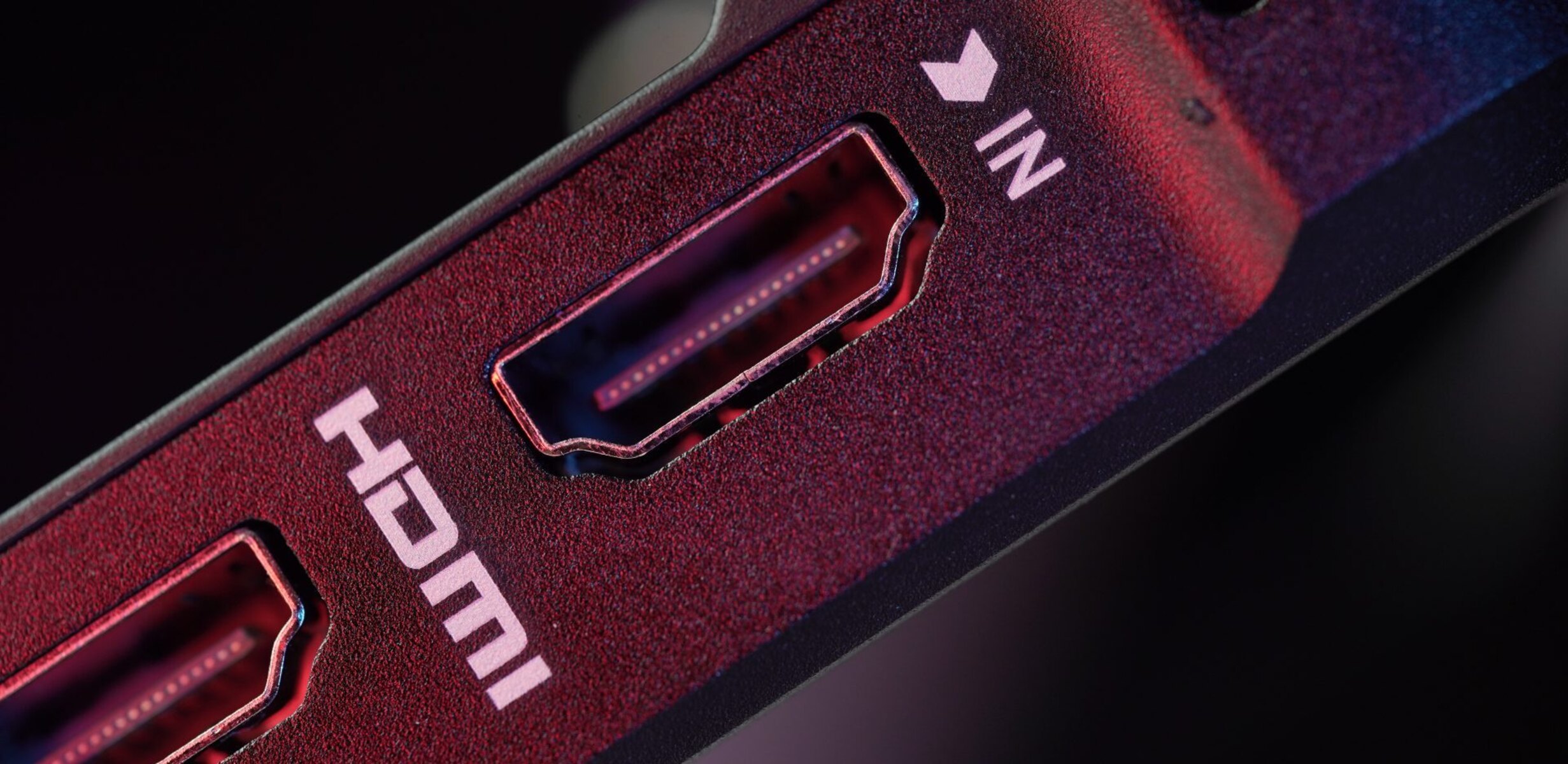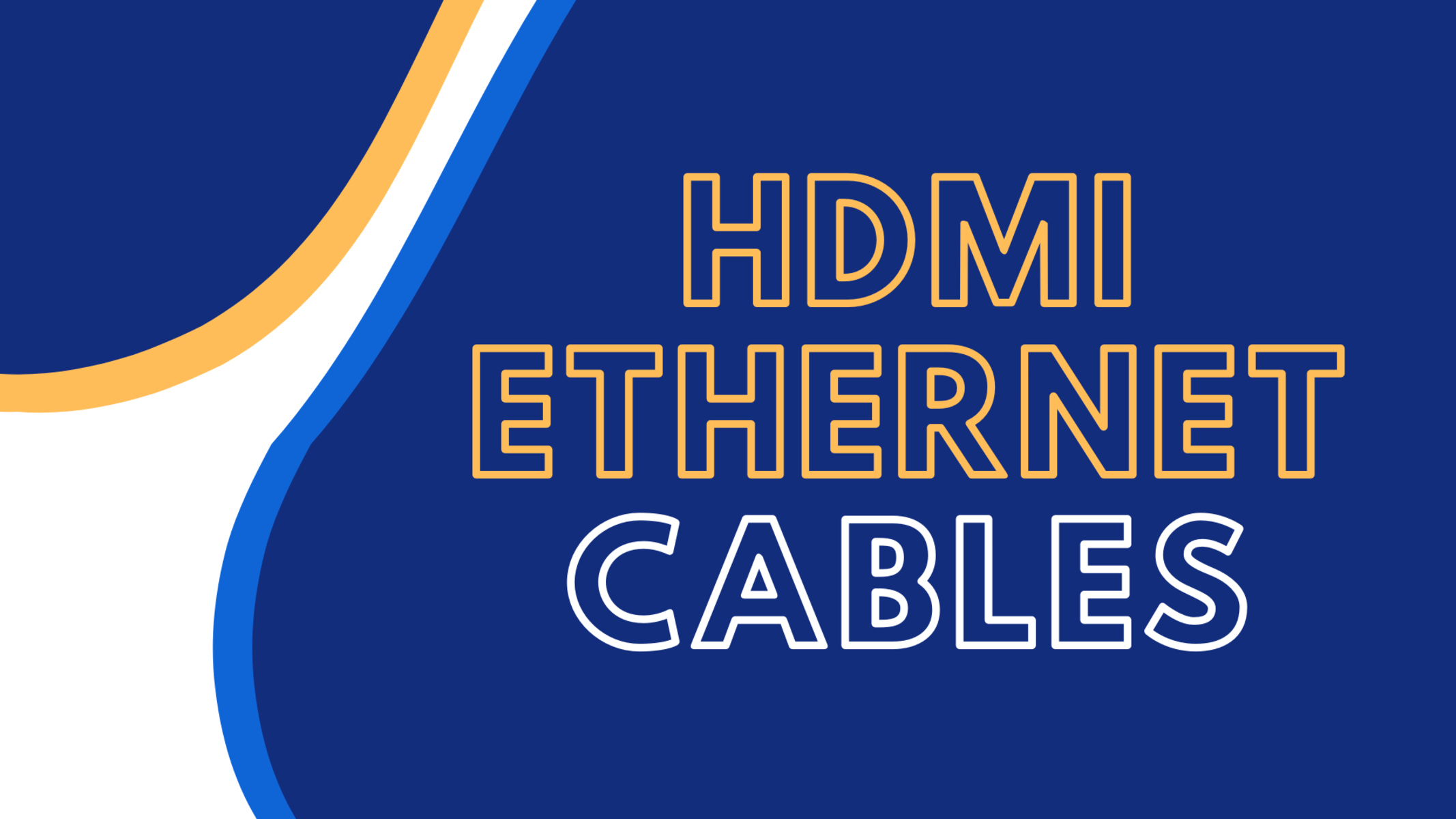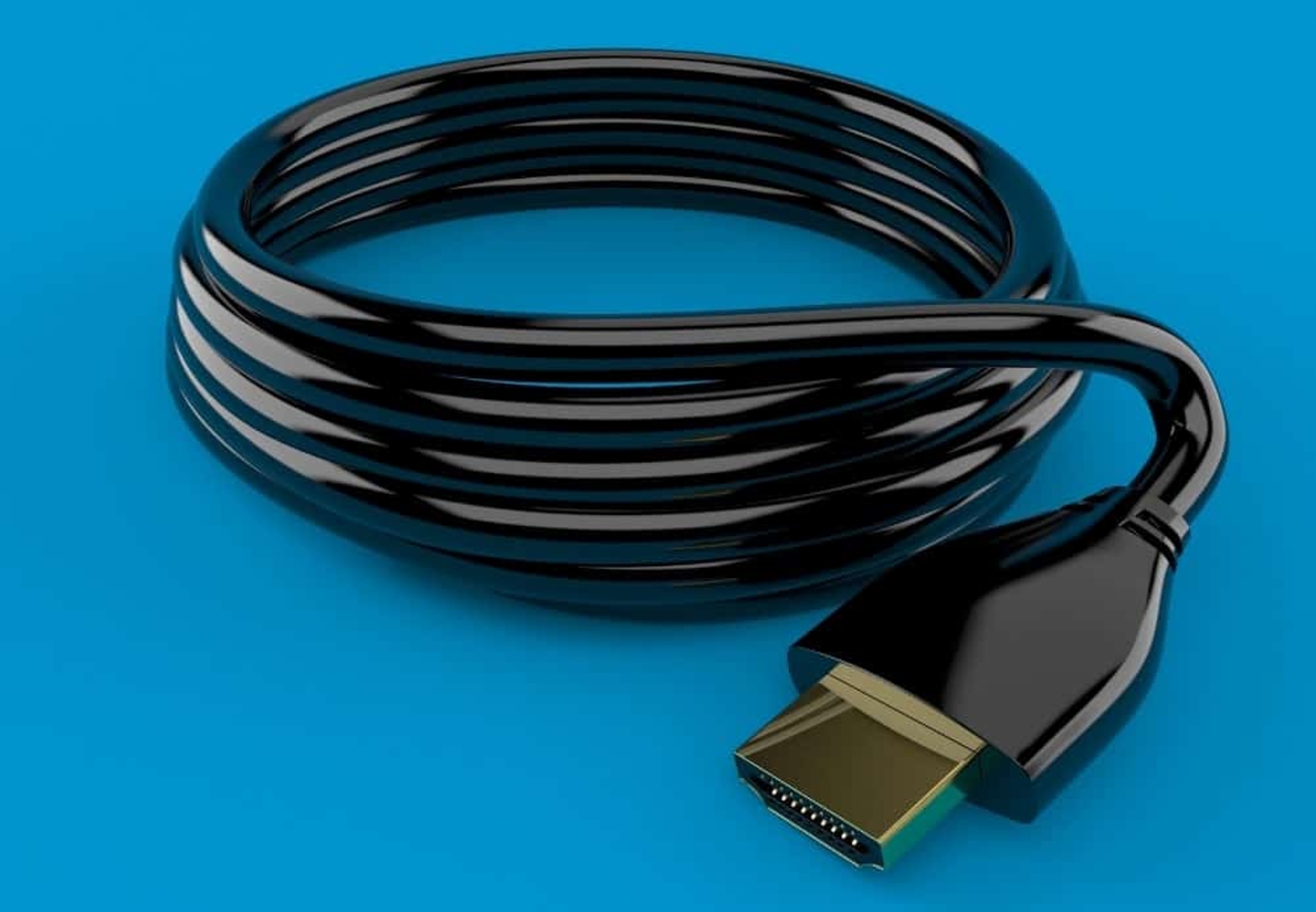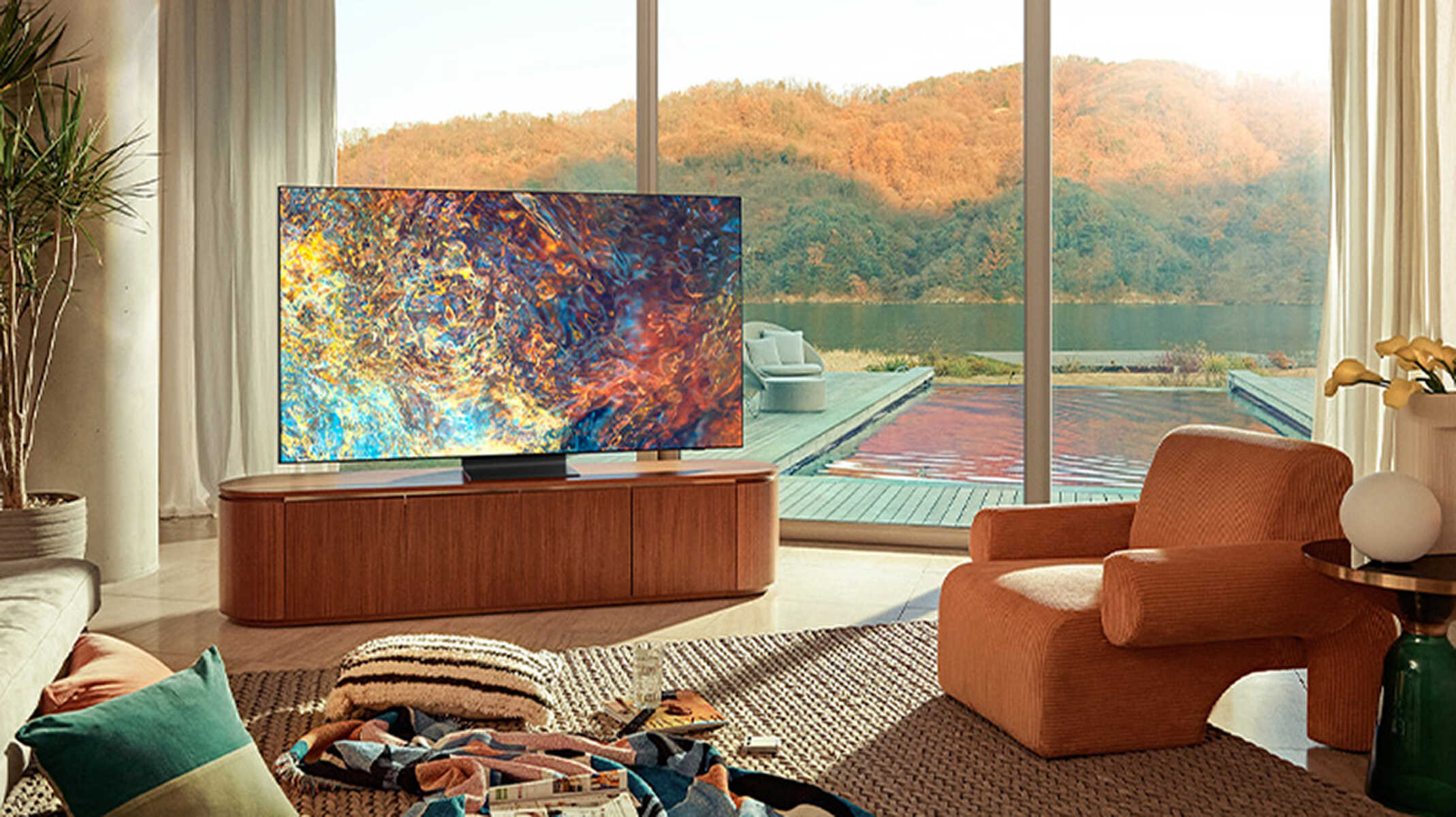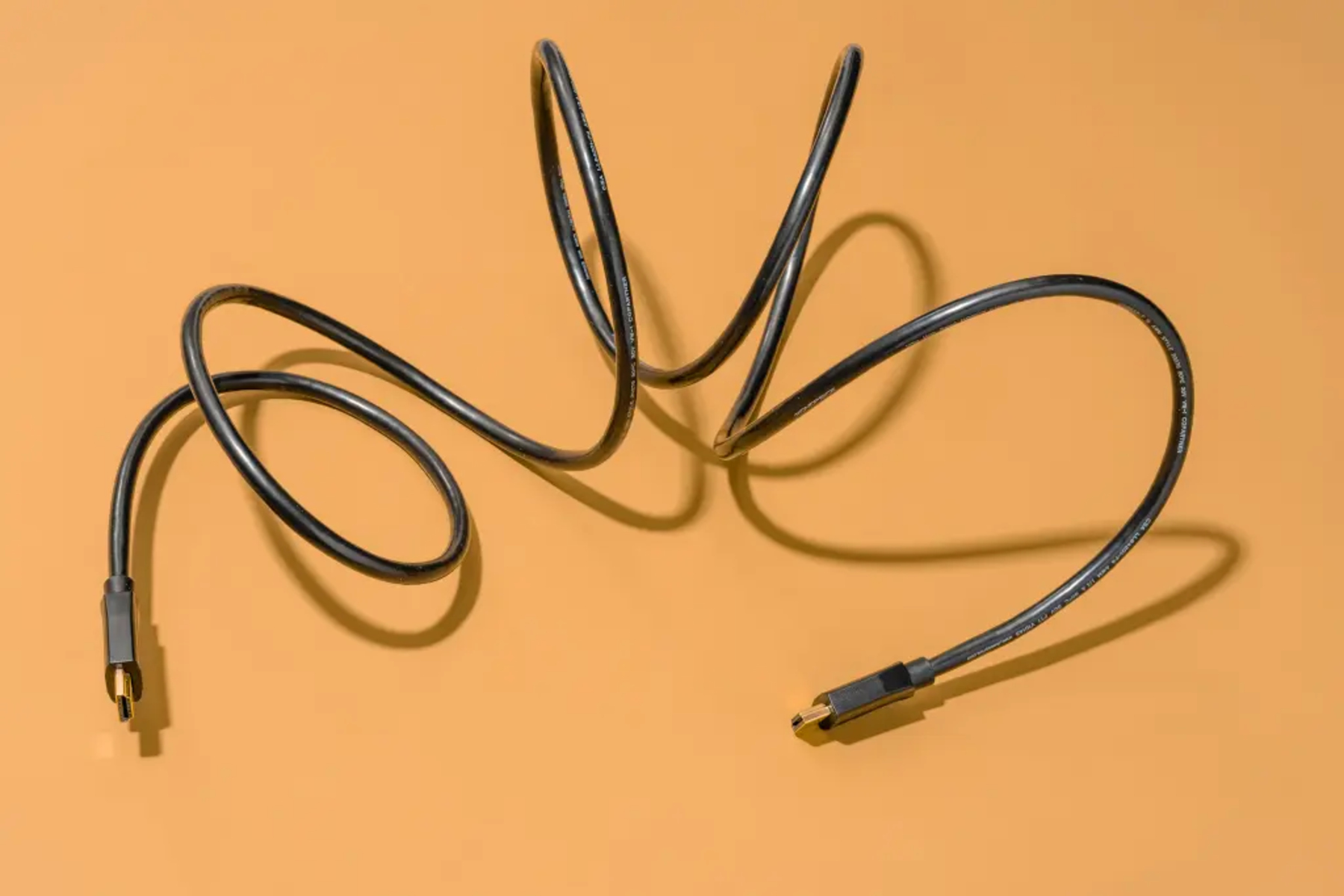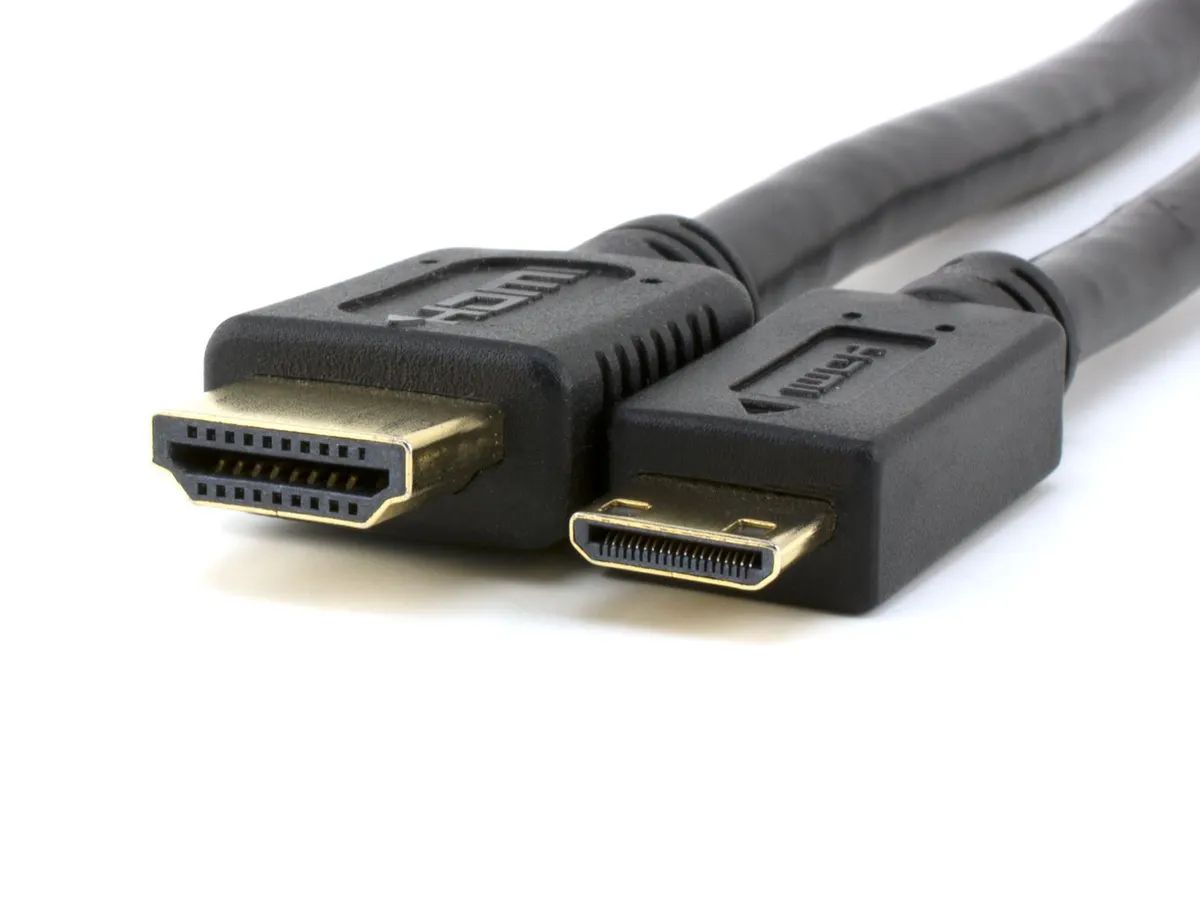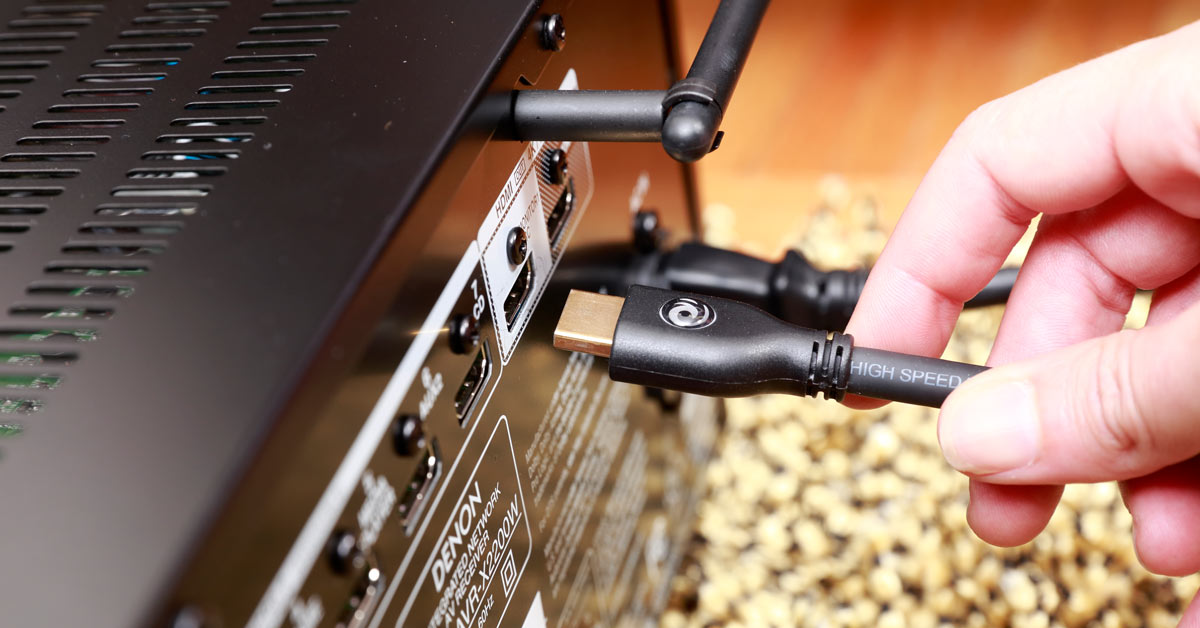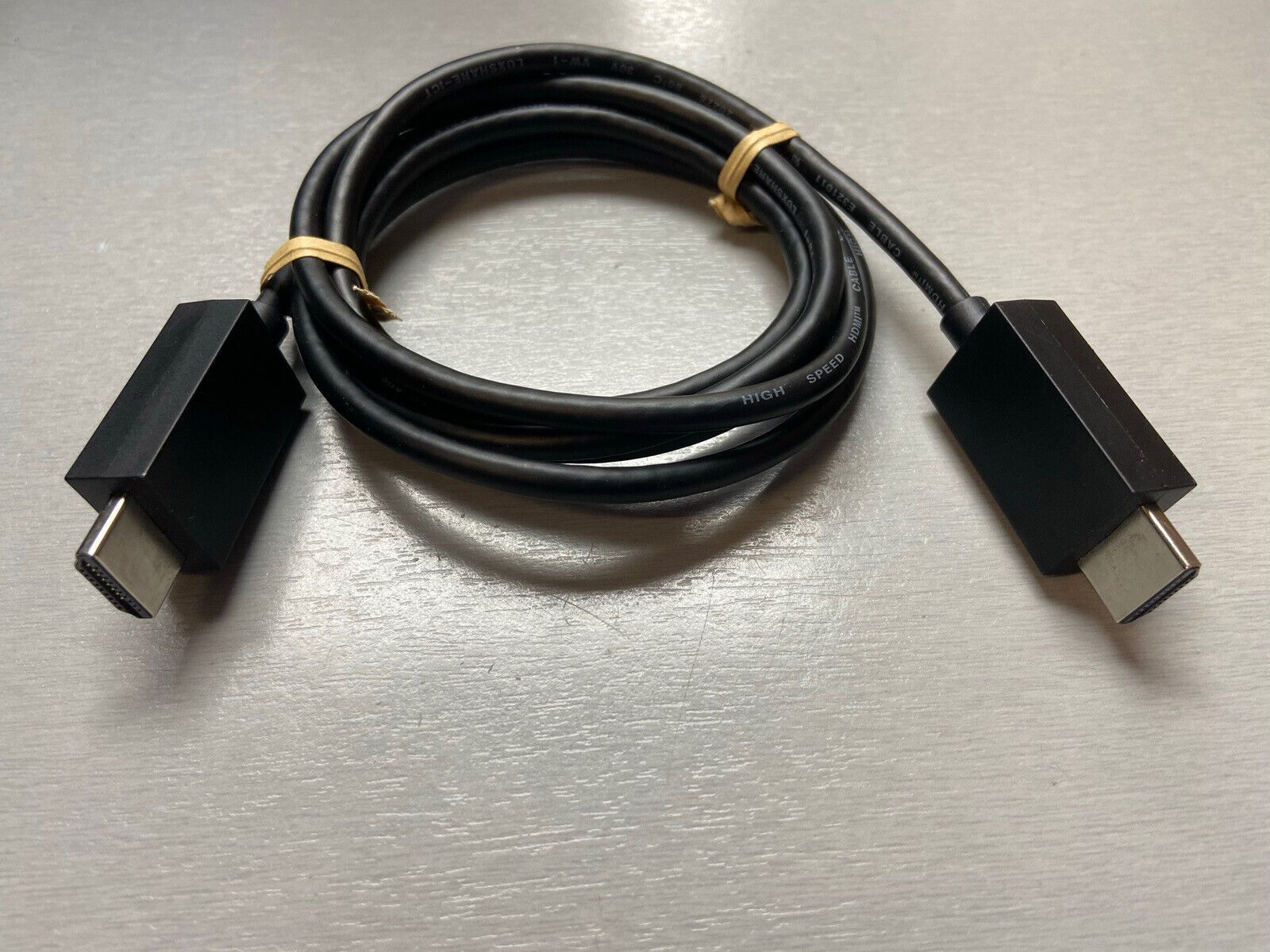Introduction
Welcome to the world of high-definition multimedia! In this digital age, where video and audio quality play a crucial role in our entertainment and professional lives, having the right cables to connect our devices is essential. One such cable that has revolutionized the way we connect our devices is the HDMI cable.
The HDMI (High-Definition Multimedia Interface) cable has become a household name for anyone seeking to connect their TVs, computers, gaming consoles, or other audiovisual equipment. With its ability to transmit high-quality audio and video signals, HDMI has become the go-to choice for a seamless multimedia experience.
Throughout this article, we will delve into the history of HDMI, explore its different types, highlight its benefits, provide tips for choosing the right HDMI cable, address common misconceptions, and offer troubleshooting advice for connectivity issues. Whether you are a tech enthusiast, a homeowner looking to upgrade your entertainment system, or a professional seeking better audiovisual solutions, this article will guide you through the world of HDMI cables.
Before we dive into the technical details, let’s take a step back and discover the journey of HDMI cables, from their inception to their widespread adoption.
History of HDMI
The history of HDMI dates back to the early 2000s when the need for a universal interface for high-definition audio and video became apparent. Prior to HDMI, various cables and connectors were used to transmit audio and video signals, which often resulted in compatibility issues and reduced signal quality.
The HDMI standard was developed by a consortium of leading consumer electronics companies, including Sony, Philips, Toshiba, Panasonic, and Hitachi. The goal was to create a digital interface that could transmit uncompressed high-definition audio and video signals over a single cable.
The first HDMI specification, version 1.0, was released in December 2002. This initial version supported video resolutions up to 1080p and had the capability to carry eight digital audio channels. Over the years, subsequent versions of HDMI were released, introducing new features and improvements.
One of the significant milestones in HDMI’s development was the release of HDMI 1.3 in June 2006. This version brought many enhancements, including support for higher resolutions, expanded color spaces, and increased audio bandwidth. It also introduced features like Deep Color, Dolby TrueHD, and DTS-HD Master Audio, enabling a more immersive audiovisual experience.
HDMI continued to evolve with the release of HDMI 1.4 in 2009, which added support for 3D content, Ethernet connectivity, and Audio Return Channel (ARC). The subsequent versions, HDMI 2.0 in 2013 and HDMI 2.1 in 2017, further pushed the boundaries by supporting higher refresh rates, 4K resolution, High Dynamic Range (HDR), Variable Refresh Rate (VRR), and Enhanced Audio Return Channel (eARC).
Today, HDMI has become the standard interface for connecting a wide range of devices, including TVs, projectors, computers, gaming consoles, home theater systems, and more. Its widespread adoption in the consumer electronics industry is a testament to its versatility, reliability, and ability to deliver top-notch audiovisual performance.
As technology continues to advance, the HDMI standard will likely evolve further to support upcoming display and audio technologies, ensuring that users can enjoy the best possible audio and video quality for years to come.
What is HDMI?
HDMI, which stands for High-Definition Multimedia Interface, is a digital interface used to transmit high-quality audio and video signals between devices. It has become the de facto standard for connecting a wide range of devices, including televisions, projectors, computers, gaming consoles, and audiovisual receivers.
Unlike older analog connections, such as VGA or component video, HDMI uses a digital signal, ensuring a pristine transmission of audio and video data. This digital nature eliminates interference and signal degradation, resulting in a crisp, vibrant, and high-definition viewing experience.
HDMI cables feature a compact and convenient connector that carries both audio and video signals. This single-cable solution simplifies the connection process, reducing clutter and eliminating the need for multiple cables. HDMI cables are also designed with robust protocols to support various audio and video formats, ensuring seamless compatibility with a wide range of devices.
One of the key benefits of HDMI is its ability to transmit uncompressed audio and video signals. This means that the data sent from the source device, such as a Blu-ray player or gaming console, is reproduced on the display device without any loss or compression. As a result, users can enjoy the true brilliance of high-definition content, including stunning visuals and immersive surround sound.
HDMI supports a wide range of video resolutions, including Full HD (1080p), Ultra HD (4K), and even higher resolutions with the latest HDMI 2.1 specification. It also supports various color spaces and refresh rates, ensuring accurate and smooth playback of content.
When it comes to audio, HDMI offers support for multiple audio channels and formats, including standard stereo, surround sound (such as Dolby Digital and DTS), and high-resolution audio formats like Dolby TrueHD and DTS-HD Master Audio. This allows users to experience rich, immersive soundscapes that complement the visual experience.
Furthermore, HDMI cables can also transmit additional data, such as Ethernet connectivity, control signals, and even power (with the latest HDMI versions). This integration of multiple functionalities into a single cable simplifies the setup process and enhances the overall connectivity options.
In the next section, we will explore the different types of HDMI cables available in the market to help you choose the right one for your specific needs.
Types of HDMI cables
When it comes to HDMI cables, there are different types available on the market. Understanding the differences between these types can help you choose the right cable for your specific needs and ensure optimal audiovisual performance.
1. Standard HDMI: This type of HDMI cable, also known as Category 1, is suitable for most home entertainment setups. It supports video resolutions up to 1080p and can transmit standard stereo or surround sound audio formats. Standard HDMI cables are ideal for connecting devices like Blu-ray players, gaming consoles, and cable/satellite boxes to TVs or projectors.
2. High-Speed HDMI: High-Speed HDMI cables, also known as Category 2, are designed for more demanding audiovisual setups. They support higher resolutions, including 4K and 3D, and can handle higher refresh rates and color depths. High-Speed HDMI cables are recommended for devices that require a higher bandwidth, such as Ultra HD Blu-ray players, 4K gaming consoles, and high-performance home theater systems.
3. Premium High-Speed HDMI: Premium High-Speed HDMI cables are the latest addition to the HDMI cable lineup. These cables are certified to meet the stringent requirements of HDMI 2.0 and 2.1 specifications. They offer support for features like High Dynamic Range (HDR), Variable Refresh Rate (VRR), and enhanced audio formats like Dolby Atmos. Premium High-Speed HDMI cables are ideal for users who want to future-proof their setups and take full advantage of the latest audiovisual technologies.
4. HDMI with Ethernet: Some HDMI cables are labeled as “HDMI with Ethernet.” These cables have the same audio and video capabilities as their respective category (Standard, High-Speed, or Premium High-Speed), but also include an additional channel for Ethernet connectivity. This allows devices connected by HDMI cables to share an internet connection, eliminating the need for separate Ethernet cables in certain setups.
It’s worth noting that despite the different types of HDMI cables, they all use the same physical connectors. This means that you can easily connect devices with different HDMI cable types using the same connectors. The key difference lies in the internal construction and bandwidth capability of the cables.
When choosing an HDMI cable, it’s important to consider the specific requirements of your devices and the capabilities you need. While it may be tempting to opt for the highest-priced cable, keep in mind that in most cases, a High-Speed HDMI cable is sufficient for typical home entertainment setups. However, if you have a 4K TV, a gaming console that supports advanced graphics, or a sophisticated home theater system, a Premium High-Speed HDMI cable may be a better investment.
Now that we’ve explored the types of HDMI cables available, let’s move on to the next section, where we will discuss the benefits of using HDMI cables over other connection options.
Benefits of Using HDMI Cables
HDMI cables offer numerous advantages over other connection options when it comes to transmitting audio and video signals. Let’s explore some of the key benefits of using HDMI cables:
1. High-Quality Audio and Video: HDMI cables are designed to deliver pristine audio and video quality. They transmit uncompressed digital signals, ensuring the highest possible fidelity and resolution. With HDMI, you can enjoy sharp, vivid visuals and immersive, high-definition sound without any loss or degradation in quality.
2. Simplicity and Convenience: HDMI cables provide a simple and convenient solution for connecting devices. A single HDMI cable can carry both audio and video signals, eliminating the need for multiple cables. This reduces cable clutter and makes setup and configuration easier and more efficient.
3. Wide Compatibility: HDMI is a widely adopted standard across various industries, including consumer electronics and audiovisual equipment. This means that most modern devices, such as TVs, gaming consoles, Blu-ray players, and audio receivers, are equipped with HDMI ports. This wide compatibility allows for seamless connectivity and interoperability between devices.
4. Versatility: HDMI cables support a wide range of resolutions, color spaces, and audio formats. Whether you have a Full HD (1080p) TV or the latest 4K HDR display, HDMI can handle it all. HDMI cables also support different audio configurations, including stereo, surround sound, and high-resolution audio formats like Dolby Atmos. This versatility ensures that you can enjoy your audiovisual content in the best possible quality.
5. Future-Proofing: HDMI technology continues to evolve, with new versions introducing advanced features and capabilities. By using HDMI cables, you can future-proof your audiovisual setup. Even if your current devices don’t fully utilize the capabilities of the latest HDMI standard, having HDMI compatibility ensures that you can seamlessly upgrade to newer devices and take advantage of advanced features without needing to change your cables.
6. Enhanced Features: HDMI cables support various advanced features like 3D content, High Dynamic Range (HDR), Variable Refresh Rate (VRR), and Audio Return Channel (ARC). These features enhance your audiovisual experience, providing more realistic visuals, smoother gameplay, and simplified audio connections.
7. Consumer Confidence: The widespread adoption and industry support of HDMI cables instill consumer confidence. Knowing that HDMI is the standard interface used by top consumer electronics companies brings assurance of quality, reliability, and compatibility.
Overall, HDMI cables provide a seamless, high-quality, and convenient solution for connecting your audiovisual devices. Whether you’re enjoying your favorite movies, playing immersive games, or creating multimedia content, HDMI cables ensure that you can fully experience the audio and video in their truest form.
Now that we understand the benefits of using HDMI cables, let’s move on to the next section and explore some tips for choosing the right HDMI cable for your specific needs.
How to Choose the Right HDMI Cable
With the variety of HDMI cables available on the market, it’s important to choose the right one for your specific needs. Here are some tips to help you make an informed decision:
1. Consider the Version: HDMI cables come in different versions, such as HDMI 1.4, HDMI 2.0, and HDMI 2.1. Each version introduces new features and capabilities. Determine the version that aligns with the requirements of your devices. If you have a 4K TV or plan on utilizing advanced features like HDR or VRR, opt for a cable that supports the latest HDMI version.
2. Bandwidth and Speed: Higher bandwidth and speed capabilities are crucial for transmitting high-resolution video and audio. Look for cables labeled as High-Speed HDMI or Premium High-Speed HDMI, as these cables ensure optimal performance for demanding setups. Standard HDMI cables are sufficient for most home entertainment systems but may not support advanced features.
3. Cable Length: Consider the distance between your source device and display. HDMI cables can range in length, but keep in mind that longer cables can potentially result in signal degradation. Choose a cable length that meets your requirements without sacrificing audio and video quality.
4. Certification: Look for HDMI cables that are certified by HDMI Licensing LLC. These certified cables undergo rigorous testing to ensure they meet the necessary standards and deliver reliable performance. The certification ensures that the cable is capable of supporting the specified HDMI features and bandwidth requirements.
5. Consider Your Needs: Assess your specific requirements. Do you need Ethernet connectivity? Do you require ARC (Audio Return Channel) functionality? Understanding your needs will help you choose the appropriate HDMI cable type that offers the necessary features for your desired setup.
6. Price vs. Quality: While it can be tempting to choose the cheapest HDMI cable available, it’s important to strike a balance between price and quality. Extremely low-priced cables may compromise on build quality and performance, affecting the audiovisual experience. Choose a reputable brand that offers a good balance of quality and affordability.
7. Customer Reviews and Recommendations: Read customer reviews and seek recommendations from trusted sources, such as tech experts or friends who have experience with HDMI cables. Their insights can provide valuable information and help you make an informed decision.
Remember, the HDMI cable you choose should meet the specific requirements of your devices and desired audiovisual setup. By considering factors like version, bandwidth, length, certification, and your individual needs, you can select an HDMI cable that provides the best audio and video performance for your specific setup.
Now that you have a better understanding of how to choose the right HDMI cable, let’s address some common misconceptions and myths associated with HDMI cables in the next section.
Common Misconceptions About HDMI Cables
When it comes to HDMI cables, there are several misconceptions and myths that have circulated over the years. Let’s debunk some of the most common misconceptions surrounding HDMI cables:
1. Expensive HDMI Cables are Better: One of the most prevalent misconceptions is that expensive HDMI cables offer better performance. In reality, HDMI cables with higher price tags do not necessarily provide any additional benefits in terms of audio and video quality. High-quality HDMI cables can be found at reasonable prices, and as long as they meet the necessary specifications, they will perform just as well as more expensive alternatives.
2. Gold-Plated Connectors Provide Better Performance: Another common misconception is that gold-plated HDMI connectors offer superior audio and video transmission. While gold-plated connectors help prevent corrosion, they do not significantly impact signal quality. The most important factor is the internal build of the cable and its compatibility with the HDMI version you require, rather than the plating on the connectors.
3. All HDMI Cables Are the Same: There is a misconception that all HDMI cables are the same and provide identical performance. In reality, HDMI cables differ in terms of version, bandwidth, and features supported. Choosing the right HDMI cable based on your specific requirements can make a noticeable difference in terms of audiovisual performance and compatibility with your devices.
4. HDMI Cables Need to Be Replaced Frequently: Some people believe that HDMI cables need to be replaced frequently to keep up with advancing technology. However, this is typically not the case. HDMI is a standardized technology, and as long as your current HDMI cable meets the required specifications for your devices, it will continue to work without the need for frequent replacements.
5. Longer HDMI Cables Always Result in Signal Degradation: While it is true that longer HDMI cables can potentially result in signal degradation, with today’s technology, signal loss is typically minimal for HDMI cables up to a certain length (usually around 15 meters or 50 feet). For longer distances, it is recommended to use an active HDMI cable or an HDMI extender to maintain signal integrity.
6. Upscaling and High-Resolution HDMI Cables Improve Lower-Resolution Content: Some people mistakenly believe that using an upscaling HDMI cable or a high-resolution HDMI cable will improve the quality of lower-resolution content. The reality is that the HDMI cable does not impact the resolution or quality of the content being transmitted. Any upscaling or enhancement is typically done by the device that is receiving the HDMI signal, such as a TV or a Blu-ray player.
It’s important to separate fact from fiction when it comes to HDMI cables. Understanding the true capabilities and limitations of HDMI cables can help you make informed decisions and avoid overspending on unnecessary features or upgrades.
In the next section, we will address some common troubleshooting techniques to help you overcome common HDMI connectivity issues.
Troubleshooting HDMI Connectivity Issues
While HDMI cables are designed to provide seamless audio and video transmission, there can be instances where connectivity issues arise. Here are some troubleshooting techniques to help you overcome common HDMI connectivity issues:
1. Check Cable Connections: Ensure that your HDMI cable is securely connected to both the source device and the display device. Sometimes, a loose cable connection can result in a loss of audio or video signal. Disconnect and reconnect the cable to ensure a proper connection.
2. Verify Power Status: Ensure that both the source device and the display device are powered on and in operational mode. Some devices may have a power-saving mode that can affect the HDMI output. Make sure all devices involved in the HDMI connection are powered and ready to transmit signals.
3. Try Different HDMI Ports: If you’re experiencing connectivity issues, try connecting the HDMI cable to a different HDMI port on your display device. Sometimes, a specific HDMI port may have a faulty connection or may not support the necessary features. Testing different ports can help determine if the issue lies with the HDMI port or the cable itself.
4. Check Source Device Settings: Verify the source device settings to ensure that the correct audio and video output settings are selected. Some devices may require specific settings to output audio and video signals through the HDMI port. Verify the user manual or settings menu of your source device to ensure the proper settings are enabled.
5. Test with Another HDMI Cable: If possible, try testing the HDMI connection with another HDMI cable. This can help determine whether the issue is with the cable itself or with the devices involved. Sometimes, a faulty cable can cause connectivity problems, and replacing it with a new cable can solve the issue.
6. Update Firmware and Drivers: Check for any available firmware or driver updates for your source and display devices. Manufacturers often release updates to address compatibility issues and improve HDMI connectivity. Updating the firmware or drivers of your devices can help resolve any compatibility issues that may be causing HDMI connectivity problems.
7. Reset Devices: If you’re still experiencing connectivity issues, try performing a reset of both the source device and the display device. This can help clear any temporary glitches or settings conflicts that are causing HDMI connectivity problems. Refer to the user manuals of your devices for instructions on how to perform a reset.
8. Seek Professional Help: If all else fails, and you’re still unable to establish a stable HDMI connection, it may be beneficial to seek assistance from a professional technician or contact the customer support of the devices involved. They can provide specialized guidance and troubleshoot the issue at hand.
By following these troubleshooting techniques, you should be able to resolve many common HDMI connectivity issues. However, it’s important to note that some problems may require specific technical expertise or hardware replacements.
Conclusion
HDMI cables have revolutionized the way we connect our audiovisual devices, providing a seamless and high-quality experience. Throughout this article, we have explored the history of HDMI, delved into its definition and different types, highlighted the benefits of using HDMI cables, offered tips for choosing the right cable, debunked common misconceptions, and provided troubleshooting techniques for HDMI connectivity issues.
From its inception in the early 2000s, HDMI has evolved to support higher resolutions, advanced audio formats, and cutting-edge features like HDR and VRR. It has become the standard interface for connecting devices, providing convenience, versatility, and unparalleled audiovisual performance.
When choosing an HDMI cable, it’s crucial to consider factors such as the HDMI version, bandwidth, cable length, certification, and your specific needs. These considerations ensure that you select a cable that meets the requirements of your devices and desired audiovisual setup.
It’s important to debunk common misconceptions surrounding HDMI cables, such as the notion that expensive cables provide better performance or that all HDMI cables are the same. Understanding the true capabilities of HDMI cables helps in making informed decisions and avoiding unnecessary expenses.
In the event of HDMI connectivity issues, troubleshooting techniques like checking cable connections, verifying power status, trying different HDMI ports, and updating firmware/drivers can often resolve the problem. In more complex cases, seeking professional help may be necessary.
Overall, HDMI cables play a vital role in delivering high-definition audio and video quality, simplifying connectivity, and enhancing our audiovisual experiences. By understanding HDMI technology, choosing the appropriate cables, and troubleshooting any issues that may arise, users can enjoy optimal performance and fully immerse themselves in the world of multimedia entertainment.







